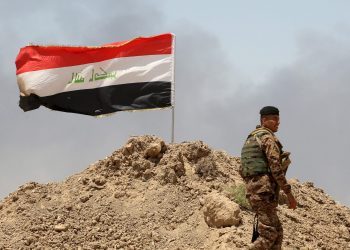AFP, SINGAPORE (AFP) Nov 11, 2003-The world's top defence companies are moving to make a big splash in the Asia-Pacific's naval arms market which is seen doubling to 14 billion US dollars in the next six years, industry experts said Tuesday.
Frigates with stealth capabilities, patrol vessels, submarines, seaborne surveillance systems as well as command and control facilities are in demand as governments upgrade capabilities to deal with a growing terrorist threat, piracy and environmental concerns.
Top defence firms from Europe and the United States participating at the International Maritime Defence Exhibition and Conference which opened here Tuesday agreed the Asia Pacific would become the world's biggest market by
Singapore Defence Minister Teo Chee Hean told the conference the threat of maritime terrorism “is not theoretical but real”.
He warned of “horrific” consequences such as a disruption of the global economy if terrorists turned oil supertankers and chemical carriers into floating bombs in such choke points at the Straits of Malacca or the Suez Canal.
Mark Ritson, director for marketing and public affairs at British defence firm BAE Systems, said that after Asian governments complete modernising their air forces, they are likely to shift to equipping their navies.
“Primarily, if you look at the Pacific Rim, the requirement is to protect borders and to deal with piracy, illegal immigration, coastal pollution and patrolling coastlines,” he told AFP on the sidelines of the conference.
“Thus, there is a demand for patrol boats like frigates and offshore patrol vessels and to a point submarines.
“It seems that countries are moving away from the key combat aircraft competition more and more towards naval requirements.”
BAE Systems senior vice president for Singapore Tony Harrison said “the essence of Asia is that it's a trading area, and so vast amounts of the world's shipping goes through this area.”
“And the rising terrorist threat has meant that any ship, any cargo has to be looked at with a degree of suspicion.”
BAE Systems can provide surveillance capabilities onshore as well as on board frigates to detect suspicious cargo. The company can also offer command and control systems for the region's navies.
Compared with 10 years ago when naval doctrines were shaped by the Cold War, the dynamics have changed to focus more on the emerging terrorist threat to shipping, Harrison said.
BAE Systems has supplied frigates to Malaysia and patrol vessels to Brunei and hopes to secure a deal to sell frigates to Thailand.
Armaris, a joint venture between French naval shipbuilder DCN and Thales, is another company that has already established a beach-head in the region.
In July last year, Armaris signed a contract to build two Scorpene Class submarines for the Malaysian navy to be delivered in 2008.
This year, the firm signed another contract to train more than 150 Malaysian sailors to man the submarines.
An old French submarine will be put into service in the next few months to train the Malaysian sailors, said Armaris communications director Jean-Marie Daviron.
He said the company also expects to participate in the construction of a naval facility for the submarines.
“It's an entire package,” Daviron said.
DCN itself has a contract with Singapore to build six stealth frigates for the city-state's navy, and Daviron said he hopes Singapore would express an interest in its submarines.
Armaris is also negotiating with India to help build six Scorpene Class submarines for the Indian navy.
While the Middle East remained Armaris' biggest market, Asia is seen a major growth area.
China's growing military influence is another reason why some Asian countries are modernising their navies, a defence expert who who asked not to be named said.









